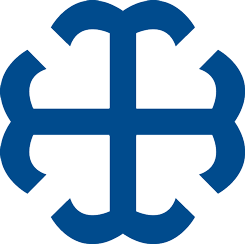America's Oldest Collegiate Conference
Founded March 24, 1888
Updated prior to 2023-24 school year
- MIAA Champions by Year
- MIAA Record Books
- Milestones
- Membership History (pdf)
- Championships Won/History of MIAA Champions (pdf)
- Commissioner's Cup
- Archival Material
INTRODUCTION
The Michigan Intercollegiate Athletic Association (MIAA) is America’s first collegiate athletic conference.
The 2023-24 academic year marks the 136th consecutive year of operation for the NCAA Division III-affiliated conference. The MIAA was founded March 24, 1888. From the very beginning, the MIAA has conducted full-season championships in multiple sports. There have been changes in some of the sports (bicycle racing and Indian club swing have long since disappeared, and basketball did not even exist in 1888), but these changes have served to develop the MIAA into one of America’s finest NCAA Division III conferences, today offering 23 sports for men and women.
The MIAA’s continuity is noteworthy. Of the thirteen schools that have had full membership, nine are still members -- Adrian, Albion, Alma, Calvin, Hope, Kalamazoo, Olivet, Saint Mary’s, and Trine. Albion and Olivet were charter members, although Albion is the only member to hold continuous membership. Ex-members are Michigan State University (1888-1907), Eastern Michigan University (1892-1926), Hillsdale College (1888-1960) and Defiance College (1997-2000).
The MIAA’s membership list went unchanged from 1954 until 1997 when Defiance College of Ohio and Saint Mary’s College of Indiana were invited to join. It also marked the first time that the league added members outside the state of Michigan. The league stipulated, however, that the name of the conference would not change. The inaugural year of current members are: Adrian (1908), Albion (1888), Alma (1902), Calvin (1953), Hope (1926), Kalamazoo (1896), Olivet (1888), Saint Mary’s (1997), and Trine (2004).
The MIAA marked a historic note in 2002 when the league accepted Wisconsin Lutheran College of Milwaukee, Wis. as an associate member for the purpose of competing only in football. Wisconsin Lutheran left after the 2007 season. In 2018 the MIAA added only its second associate member for football competition.
Tri-State University became a conference member in 2004-05 upon its acceptance as a provisional NCAA member. Tri-State became a full member of the NCAA on August 1, 2007. On August 1, 2008, Tri-State changed its name to Trine University.
BUILDING A FOUNDATION
James Heckman of Hillsdale College is considered the “Father of the MIAA.” After several schools had sponsored successful track and field days from 1884 to 1887, Heckman promoted the idea of a permanent league. The first delegates met in Jackson, Mich., on March 17, 1888, to organize the MIAA.
In Michigan, the state population in 1888 was two million people; 13 schools were offering classes on a college level. Of the schools which were to figure in MIAA history, Eastern Michigan was the largest with 714 students. Albion’s enrollment was 451, Hillsdale 450, Michigan State 314, Olivet 277, Adrian 150, Hope 148, Kalamazoo 143, and Alma 95.
Among the denominational schools, the enrollment figures included many students taking work on a high school level; at Kalamazoo, for example, 98 of the 143 were preparatory students, and only 45 were taking college work. As a result, athletic teams of those years included both high school and college students, and five or six years of participation on one school’s teams was not unusual.
A week after this historic meeting, delegates from Albion, Hillsdale, Michigan, and Olivet drew up the MIAA’s first constitution.
Less than three months later, the first MIAA track and field meet was held in East Lansing with competition on May 31, June 1-2, 1888, in baseball, track, and tennis.
Hillsdale was the MIAA’s first track champion. Other competing colleges included Albion, Michigan State, and Olivet. Track and field events in that first meet included the 100-yard dash, 200-yard dash, 880-yard run, high jump, long jump, shot put, hammer throw, and mile relay.
Other events included at the first Field Day included lawn tennis, wrestling, Indian club swing, horizontal and parallel bar performing, bicycle racing, sparring, and tug-of-war.
The 440-yard dash, mile run, high hurdles, and pole vault were introduced in 1889. The two-mile run and discus became league events in 1912 and the javelin replaced the hammer throw in 1913.
In 1889, at the second annual MIAA Field Day, Albion and Olivet engaged in an exhibition “football match.” In 1891, Albion defeated Hillsdale at Hillsdale 36-4 in the first intercollegiate football game in the MIAA, but it wasn’t until 1904 that football was recognized as an official league sport.
Basketball became a league sport in 1911, followed by cross country (1922), golf (1934), wrestling (1969), soccer (1970), and swimming (1971). Lacrosse began league play in the spring of 2013.
In 1978-79, the league combined into a single structure the administration of the men’s and women’s athletic programs of the member schools.
A book written to commemorate the 100th anniversary of the MIAA, “Celebrating A Century of the Student Athlete,” was the first place winner in a national competition sponsored by the College Sports Information Directors Association. In the summer of 2013, the NCAA Hall of Champions held an exhibit honoring the MIAA’s 125th anniversary.
WOMEN'S SPORTS IN THE MIAA
Intercollegiate sports for women at MIAA schools have roots that go much deeper than the 1978-79 implementation of a common governance.
Six years after the league was founded the first Albion College tennis tournament, held in May 1894, was a co-ed event.
By February 1899, the Albion College student newspaper reported: “Interest in basketball has not been confined to the men this year, but has extended to the ladies of the institution. After about two more weeks of practice, the ladies will be ready to receive challenges from our sister colleges.”
Albion’s defeat of Hillsdale in women’s basketball in 1910 by a 36-7 score caused this editorial comment: “Of course, the score was very gratifying to us, but the important question is what these games mean to do in the way of skill, coolness, and presence of mind under trying circumstances, but they also develop physical and moral course, self-control and ability to meet success or failure with dignity.”
The first attempt to organize a women’s athletic program for MIAA members occurred in 1936 when Albion invited all of the MIAA schools to a play day and convention. Approximately 100 women from Adrian, Albion, Hillsdale, Kalamazoo, and Olivet participated in archery, tennis, volleyball, basketball, badminton, tennis, softball, and swimming. This began an informal association of the women. Activities added in later years included chinese checkers, darts, and ping pong.
The first formal organization for women in college athletics in Michigan occurred in 1941 with the drafting of a constitution for what was to be known as the Athletic Federation of Michigan College Women (AFMCW).
While the MIAA suspended play during World War II there was some competition among the women. In 1940, Albion defeated Alma 4-1 in a field hockey game, which replaced the canceled homecoming football game between the schools.
By 1946, two separate athletic organizations for women had been organized in Michigan, creating some confusion. Members of the original group changed their name to the Women’s Michigan Intercollegiate Athletic Association (WMIAA) while promoters of the new state organization, mostly the larger universities, remained known as the AFMCW.
The executive board of the WMIAA in 1951 reaffirmed the value of its activities, noting that the new state group could not supply the same needs. A new WMIAA constitution was ratified in 1952. In May 1961, it was decided that the play days would be discontinued and the archery and tennis tournaments became the only formal activity of the women’s association.
In May 1977, the MIAA Presidents adopted a policy favoring the bringing together of men’s and women’s athletics at their institutions into a single organization. The single league structure was implemented in the 1978-79 school year.
Cross country was added as an MIAA sport for women in 1981-82 as archery was dropped, and soccer was added in 1989-90. Field hockey ended as a women’s sport after the 1990 season. Golf was added as a women’s sport in 1991-92. Lacrosse made its debut as a women’s sport in the spring of 2013.
COMMISSIONER'S CUP
Since 1934-35, the MIAA has presented an All-Sports Award to the member school with the best cumulative performance in all conference sports during a school year. Since 1981-82, the award winner has been determined on the basis of both men’s and women’s sports. Beginning in 1998-99, the MIAA presented awards for the best cumulative finish in men’s and women’s sports as well as the All-Sports Award, now known as the Commissioner’s Cup.
MIAA ON THE NATIONAL STAGE
MIAA member schools are active in Division III of the NCAA, both as participants and tournament hosts, as well as being involved in the governance of the Association.
Since 1990, MIAA member colleges have won 21 national Division III championships. NCAA Division III history was made in 1991-92 when the MIAA claimed two national championships in basketball -- Calvin the men’s title and Alma the women’s. The Trine softball program is the most recent national champion from the MIAA, winning the NCAA Tournament in 2023. The league has had 105 individual NCAA national championship performances since 1978.
MIAA members have hosted NCAA national championship events in baseball, men’s and women’s basketball, men’s and women’s cross country, men’s golf, women’s golf, volleyball, men’s and women’s swimming/diving, men’s and women’s tennis and men’s track.











